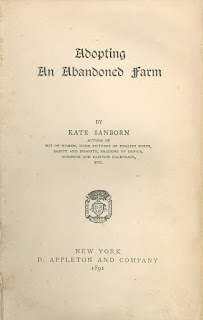... and up in the sky ...and under the ground ...and on top of the water
Old Home Days are coming! 120 years ago in 1899 Governor Frank West Rollins invented and promoted the event.
For more information on the history of Old Home celebrations and the Rollins family check out this blog at Cow Hampshire. While you are there search for all kinds of subjects on this wonderful site. Rollins also wrote a "red book" on New Hampshire published in 1902. See pour revious blog on those "red books" here.
In his 1904 Old Home Committee report, then Governor Nahum Josiah Bachelder, who founded the series NH Farms for Summer Homes (see this previous blog) wrote an "Official Invitation" to "Absent Sons and Daughters of New Hampshire." (click on images to enlarge them).
He announced that "Our greeting will be expressed by the fires on the old hill tops, flaming from peak to peak our great joy at your return..." Throughout the years, the Old Home reports listed towns that had these fires.
In Madison they celebrate Old Home Week by building a fire in a hole in the ground and then cover it up...
...oh and they put a bunch of enamelware pots of baked beans in the hole too.
The next day they dig them back up and serve them to the waiting throngs of people.
The firemen frequently take to the lake to cool their heels after standing in the pile of hot coals.
At another Old Home celebration, author Tom Curren uses the more traditional cast iron pots for his bean hole beans. Other foods featured at Old Home Days include pancake breakfast, community picnics, lobster dinners and s'mores with fireworks.
Tom wrote the booklet ...
On Chocorua Lake they hold a twilight lantern parade.
This year they are doing a lantern making workshop to prepare.
Donald Hall wrote a book on "Old Home Day" in which he summarized the history of the event.
For a list of Old Home celebrations see this link.
For more details on this or any other historical subject in the White Mountains, contact us at the Conway Public Library's Henney History Room.



















































